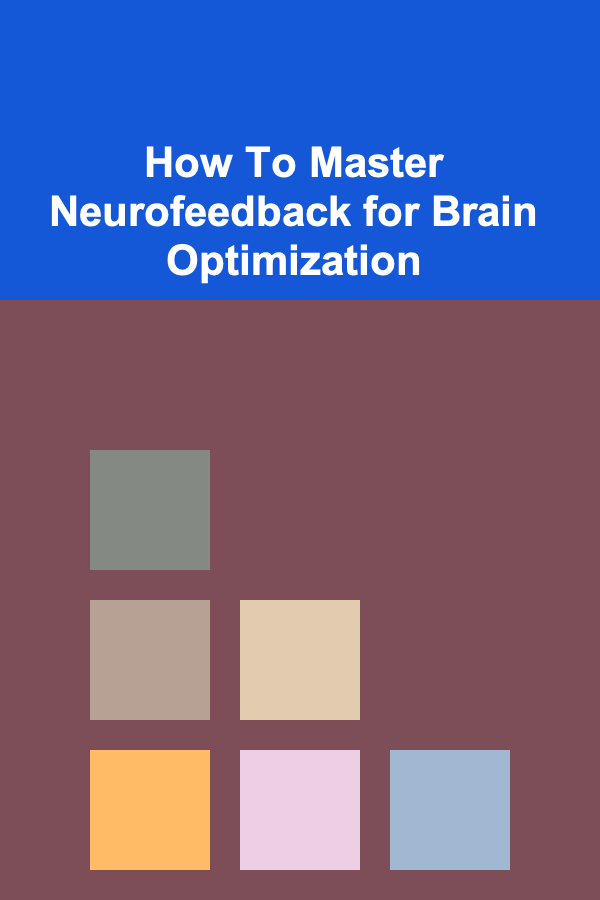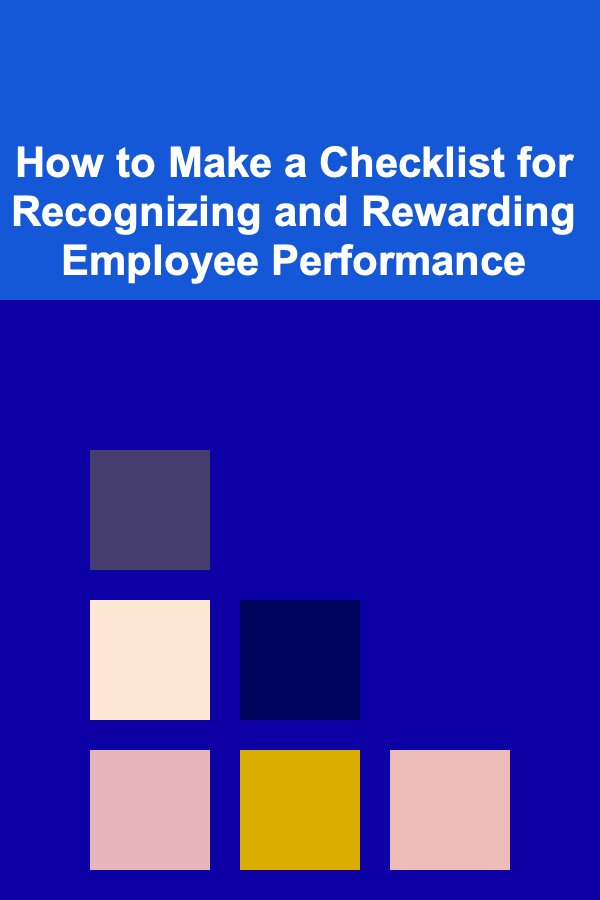
How To Master Neurofeedback for Brain Optimization
ebook include PDF & Audio bundle (Micro Guide)
$12.99$8.99
Limited Time Offer! Order within the next:

In recent years, neurofeedback has gained significant attention as a powerful tool for brain optimization. From improving mental clarity and emotional regulation to enhancing cognitive performance, neurofeedback has the potential to unlock a new level of human performance. This article will delve into the science behind neurofeedback, explore its applications, and provide a step-by-step guide on how to master this technique for optimal brain health.
Understanding Neurofeedback
Neurofeedback, also known as EEG biofeedback, is a form of biofeedback that uses real-time monitoring and training of brainwave activity to promote optimal brain functioning. Brainwaves are electrical impulses in the brain, produced by the synchronized firing of neurons. These brainwaves can be classified into different frequencies, each corresponding to various mental states and cognitive processes. Neurofeedback aims to regulate these brainwaves by providing feedback to the individual, helping them learn to consciously alter their brain activity to reach desired mental states.
The Science Behind Neurofeedback
The human brain operates in different states depending on the frequency of brainwaves. The main brainwave categories include:
- Delta Waves (0.5-4 Hz): These are the slowest brainwaves and are typically associated with deep sleep and unconscious states.
- Theta Waves (4-8 Hz): Theta waves are linked to deep relaxation, creativity, and light sleep.
- Alpha Waves (8-12 Hz): Alpha waves are related to calm, relaxed, yet alert states. They are often observed when a person is in a relaxed, but awake, state, such as during meditation.
- Beta Waves (12-30 Hz): Beta waves are present when the brain is active, engaged in focused mental activity or problem-solving. High beta waves are associated with stress, anxiety, or overactivity.
- Gamma Waves (30-100 Hz): Gamma waves are the fastest and are related to higher cognitive functioning, memory processing, and information retention.
Neurofeedback sessions monitor these brainwave frequencies and use sophisticated technology to provide immediate feedback to the individual. Feedback can take many forms, such as visual, auditory, or tactile signals, informing the person of their brain's activity. Through repetition and practice, individuals can learn to increase or decrease specific brainwave frequencies to optimize their mental states.
Applications of Neurofeedback
Neurofeedback has a wide range of applications in improving mental health, cognitive performance, and overall well-being. Some of the primary uses include:
1. Mental Health Treatment
One of the most common applications of neurofeedback is in the treatment of mental health disorders. It has been used to help individuals manage conditions such as:
- Anxiety: Neurofeedback helps individuals regulate overactive beta waves, which are often linked to heightened states of stress and anxiety. By training the brain to reduce these waves, neurofeedback promotes a more relaxed and balanced state of mind.
- Depression: Depression is often associated with slow or low-frequency brain activity, particularly in the frontal lobe. Neurofeedback can help balance brainwave patterns and enhance alpha and beta wave activity, potentially leading to improved mood and emotional regulation.
- ADHD (Attention Deficit Hyperactivity Disorder): Neurofeedback has been shown to help children and adults with ADHD by training them to increase beta waves and reduce theta waves, leading to improved focus, attention, and impulse control.
- PTSD (Post-Traumatic Stress Disorder): People with PTSD often have dysregulated brainwave patterns due to trauma. Neurofeedback can assist in restoring balance and enhancing emotional resilience.
2. Cognitive Enhancement
Neurofeedback has been widely used to boost cognitive performance. Many individuals use neurofeedback to optimize their mental abilities, including memory, focus, and creativity. Some of the key cognitive benefits include:
- Improved Attention and Focus: By enhancing beta waves, neurofeedback can improve an individual's ability to concentrate and stay focused on tasks for longer periods.
- Enhanced Memory: The synchronization of brainwave activity has been shown to improve working memory and long-term retention.
- Increased Creativity: Neurofeedback can promote more efficient brainwave patterns associated with creativity, helping individuals access their creative potential.
- Better Decision-Making: By optimizing brainwave patterns, neurofeedback can improve executive functions, such as decision-making, problem-solving, and planning.
3. Performance Enhancement
Neurofeedback is also used by athletes, musicians, and other high-performance individuals to optimize brain functioning for peak performance. For example, it can help:
- Reduce Performance Anxiety: By regulating anxiety-inducing beta waves, athletes can enter a state of "flow," where they perform at their best under pressure.
- Increase Mental Resilience: Through neurofeedback, individuals can train their brains to stay calm and focused during stressful situations, leading to better performance under pressure.
- Enhance Coordination and Reaction Time: Training brainwave frequencies can improve motor skills, hand-eye coordination, and reaction times, which are crucial for sports and other physical activities.
How Neurofeedback Works: A Step-by-Step Process
To understand how to master neurofeedback, it's essential to know how the process works from start to finish. The typical neurofeedback session consists of several steps, from brain assessment to training.
1. Initial Brain Assessment
Before starting neurofeedback training, a trained clinician will conduct an assessment of your brain activity. This is usually done by placing small electrodes on the scalp to record the electrical activity in different regions of the brain. The clinician will analyze this data to determine any imbalances or areas that require training.
The assessment helps to identify which brainwave frequencies are out of sync and which regions of the brain need attention. It also provides a baseline for measuring progress over time.
2. Setting Goals for Brain Optimization
Once the initial assessment is complete, you will work with your clinician to set specific goals for your brain optimization. These goals may include improving focus, reducing anxiety, enhancing memory, or managing symptoms of a particular condition. The goals will guide the neurofeedback protocol tailored to your needs.
3. Neurofeedback Training
The core of neurofeedback is the training process. During a session, you will wear a cap or electrodes that monitor your brainwave activity in real-time. The clinician will provide feedback, usually in the form of a visual display or audio cues. For example, a video game-like interface might show a character moving in response to your brainwave patterns.
As you engage with the feedback, the goal is to reinforce desirable brainwave patterns. For instance, if you are trying to reduce anxiety, the neurofeedback system will reward you when you produce more alpha waves (calm, relaxed state) and less beta waves (stress, anxiety).
4. Repetition and Consistency
Like any skill, mastering neurofeedback requires repetition and consistency. Over time, your brain will learn to self-regulate and produce more optimal brainwave patterns. Training sessions typically last 30 to 45 minutes and may be done two to three times per week. The number of sessions required will depend on your specific goals and progress.
5. Monitoring Progress
Throughout the training process, your clinician will monitor your progress and adjust the neurofeedback protocol as needed. Progress is measured by comparing your brain activity before and after each session, as well as evaluating the achievement of your set goals.
As your brain learns to produce the desired brainwave patterns, you may begin to notice improvements in your mental state, focus, or emotional regulation.
Tips for Mastering Neurofeedback
Mastering neurofeedback requires patience, commitment, and an understanding of the process. Here are some tips to help you get the most out of your neurofeedback training:
1. Set Clear Goals
Before starting neurofeedback, clearly define what you want to achieve. Whether it's reducing anxiety, improving focus, or enhancing cognitive abilities, having specific goals will help you stay focused and motivated throughout the process.
2. Be Consistent
Neurofeedback requires consistent practice to achieve lasting results. Make sure to attend your scheduled sessions regularly and follow the instructions provided by your clinician.
3. Stay Patient
The process of training your brain to produce optimal brainwave patterns takes time. Be patient with yourself and trust that the improvements will come with consistent effort.
4. Complement with Other Practices
While neurofeedback is powerful on its own, it can be even more effective when combined with other practices, such as meditation, exercise, and healthy nutrition. These activities help promote brain health and improve overall well-being.
5. Stay Open to Adjustments
Throughout the process, your clinician may adjust the training protocols based on your progress. Stay open to these adjustments and trust that they are designed to help you achieve the best possible results.
Conclusion
Neurofeedback is a groundbreaking technique that allows individuals to optimize their brain activity for better mental health, cognitive performance, and overall well-being. By learning to regulate brainwave patterns, individuals can unlock their full potential and achieve peak performance in various aspects of their lives. Mastering neurofeedback requires patience, consistency, and a clear understanding of your goals. With dedication and the right guidance, neurofeedback can help you harness the power of your brain and lead a more optimized, balanced life.

How to Build a Checklist for Managing Project Budgets and Expenses
Read More
How to Make a Checklist for Recognizing and Rewarding Employee Performance
Read More
How to Prevent UTIs Naturally
Read More
Real Estate Broker's Handbook: Proven Techniques for Maximizing Profit and Client Satisfaction
Read More
Start Here: The Basics of Graphic Design
Read More
How to Get Involved in Climate Volunteering
Read MoreOther Products

How to Build a Checklist for Managing Project Budgets and Expenses
Read More
How to Make a Checklist for Recognizing and Rewarding Employee Performance
Read More
How to Prevent UTIs Naturally
Read More
Real Estate Broker's Handbook: Proven Techniques for Maximizing Profit and Client Satisfaction
Read More
Start Here: The Basics of Graphic Design
Read More